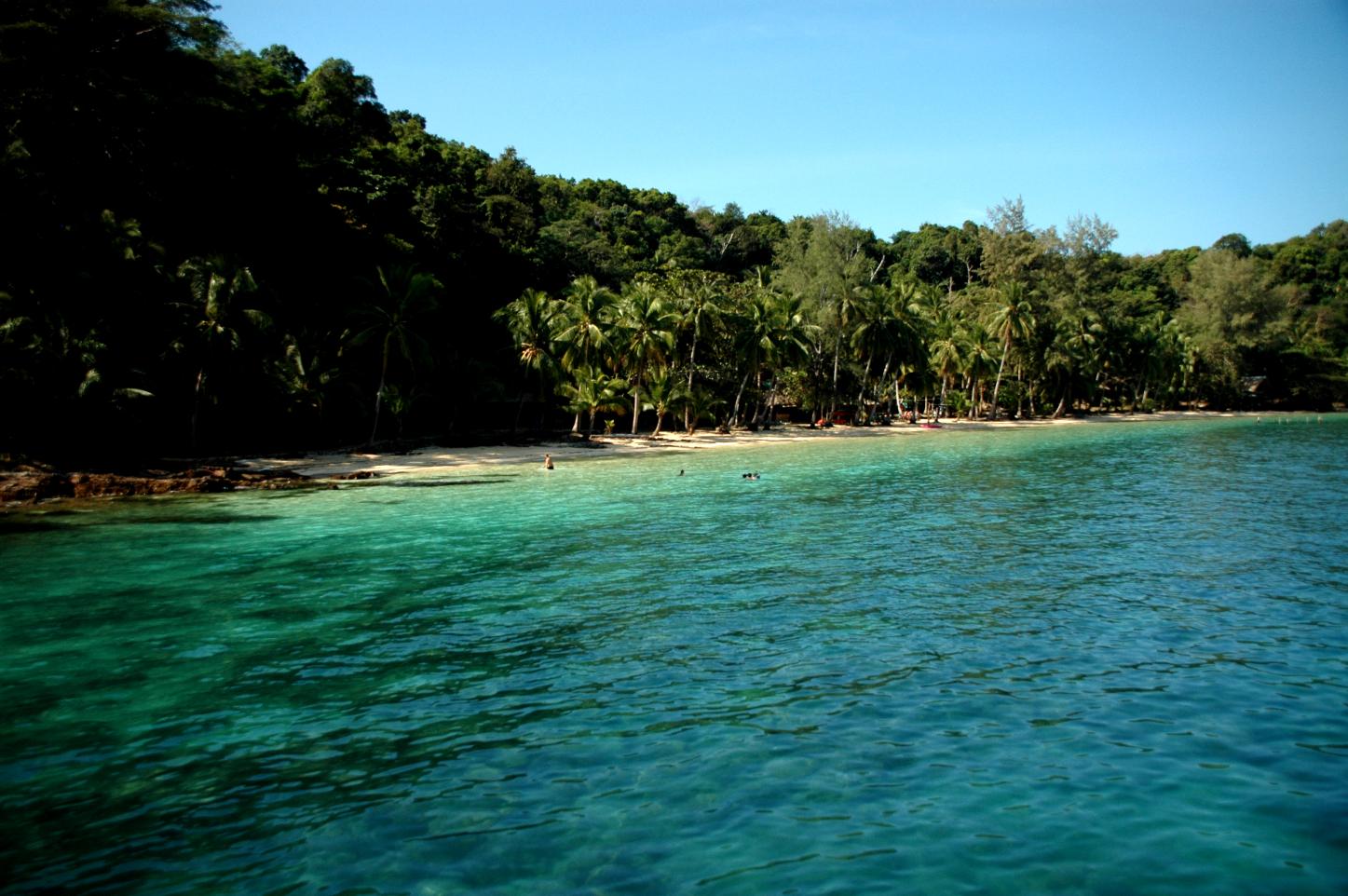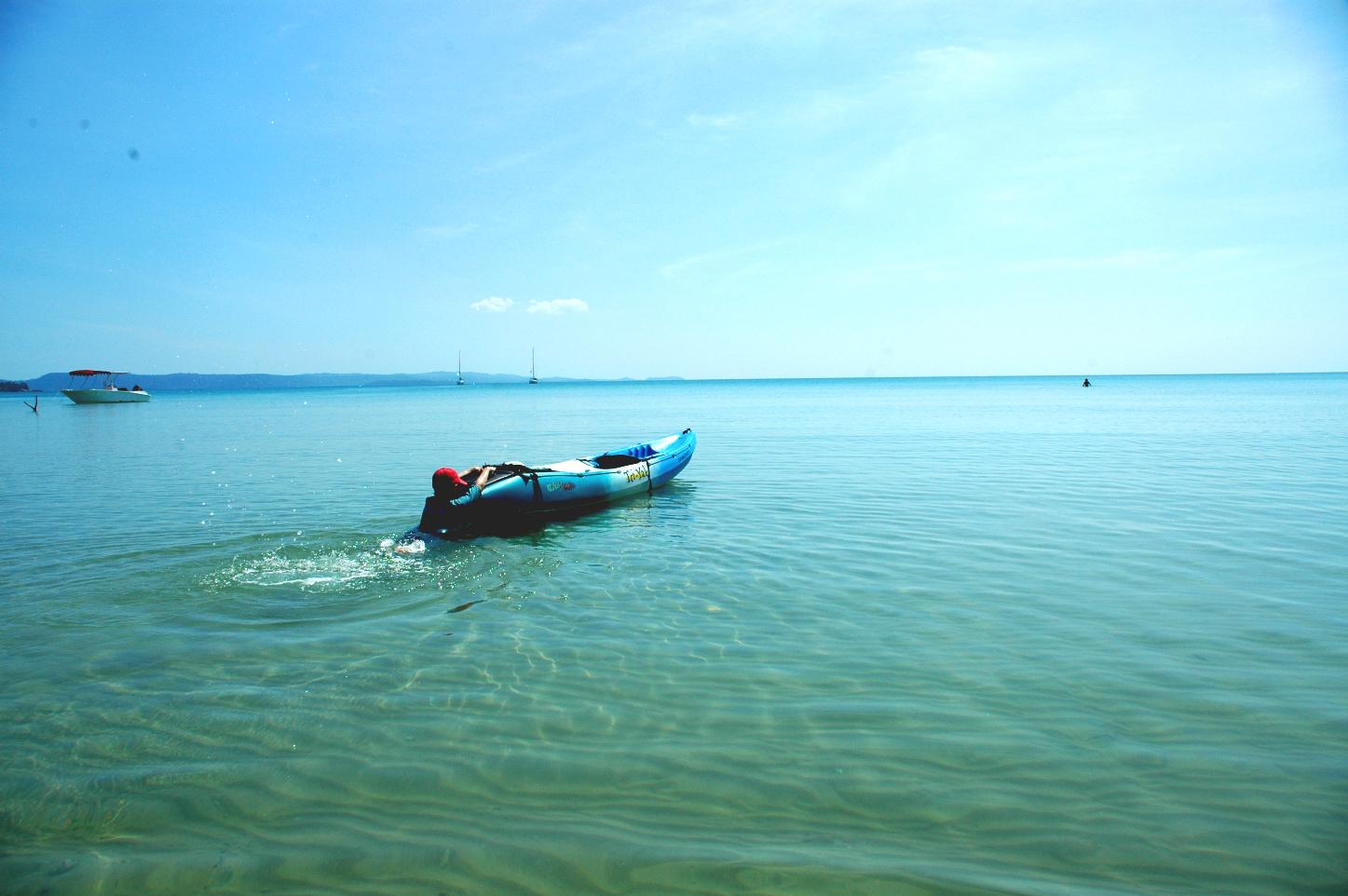What’s New?’ – Mu Ko Chang National Marine Park, Thailand (27.03.13)
‘Tell me what’s new?’ … the eternal question a travel journalist utters when searching for a story.
With magazine pages, newspaper travel sections and all manner of social media outlets to satisfy, life for travel journos is often trying, especially when the need to be ahead of the game is the default mode. After all, in order for a travel publication to be taken seriously it has to put across what is at the forefront of modern-day travel, with regular articles on the most exciting travel destinations.

The truth is ‘new’ does not necessarily need to mean an unvisited destination, or a hitherto undiscovered wilderness. A new genre of hotel, adventure activity or chill-out practice can be equally as exciting. Newly arranged facilities and services can combine to produce the ‘wow factor’ just as effectively as the discovery of a newly opened landscape or culture.
That said, whenever I am asked the ‘what’s new?’ question I try to come up with somewhere or something that is changing in an already established destination. Thailand, for example, is not only one of South East Asia’s most popular holiday destinations, but also a relatively mature market, certainly in comparison to its nearest neighbours Burma and Indochina.
I first visited the ‘Land of Siam’ in 1984, and like many before and after was bowled over by the friendliness of the people and beauty of their land. My early memories are of the deserted islands off Kho Samui and Kho Phangan – as well as the under-visited Phi-Phi island beaches – but the subsequent decades of steady, often unplanned, tourism development have taken their toll.

As mainstream tourism has brought new airports, full moon parties and high-rise developments, thirty years on from my first visit you could be forgiven for assuming that Thailand had been overwhelmed and was unable to produce a ‘new surprise’.
However, the truth is Thailand has many exciting locations that are well off the tourist route. Whether a journalist is looking for a new story, a new destination or a new escape venue – they are out there.
For instance, the last time I visited Thailand I was amazed to discover the islands that make up the Mu Ko Chang National Marine Park, in Trat Province. They are simply fabulous. And although the marine park is huge – covering an area of over 650 sq kms – it is visited by a relatively steady stream of less frenetic visitors. Covering a vast area, the park is home to over fifty islands – all within a stone’s throw of Cambodia. It is both remarkable in its beauty and extraordinary in its proximity to so many busy South East Asian metropolises.
Having done my time, and more, up and down the country’s peninsular west and east coasts I was thrilled to discover such an exciting variety of relatively untouched classic paradise islands. Located a short flight, or 4 hours’ road trip away from Bangkok, the white sand bounty-bar beaches are as delicious as the pace of local life.
For me they very much fall into the “what’s new” category, as they are thankfully under-developed and pretty untouched. I was particularly drawn to the surrounding area that encompasses the outer islands of Ko Kut, Ko Mak and Ko Wai, which fit the classic Thai paradise description.

They are ‘new’ not so much as undiscovered tropical islands, but a destination located in the heart of a very new and changing part of the world. Where as the traditional European tourist markets may have over-looked them over the years – the expansion in wealth throughout South East Asia is surely going to impact on this impressive National Park.
Navigating between the islands on today’s local inter-island ferry boats I was reminded of how gentle and tourist-free Boroccay Island was in the Philippine thirty years ago. Similarly the gentle palm-kissed beaches of Ko Kut, Ko Mak and Ko Wai – with lush jungle surrounding – retain the feeling of yesteryear as with some of other South East Asia’s remoter coastal destinations off Vietnam, Cambodia and of course Burma.
What is going to be interesting with these ‘new’ islands is how they develop and change over their short and mid-term future. How will today’s explosion of wealth across the Pacific region shape the tourist landscape of these national park islands? With such easy accessibility to Bangkok, Phom Pehn, Saigon, Kuala Lumpur and Singapore – let alone all things China – who will monitor, and above all safeguard, their beauty?
I am heartened by the fact that, positioned as they are away from the mainland river system, their marine park waters are as clear as glass, having enjoyed 31 years’ status as an IUCN Category II protected area. So let’s hope the country’s political muscle is strong enough to hold back what will surely be a strong urge to develop.
Perhaps journalists seeking a ‘What’s new?’ story are the region’s greatest asset.





Click here to add your own text







